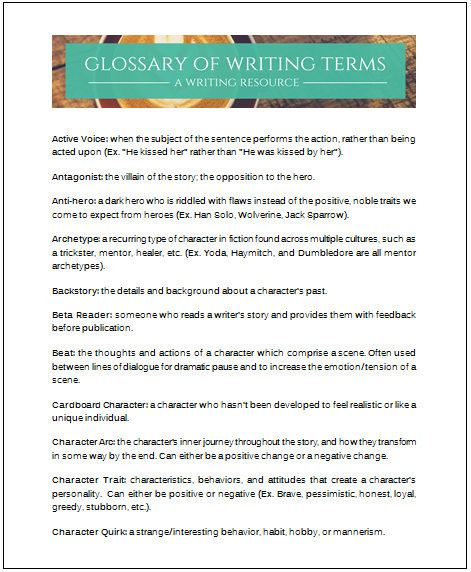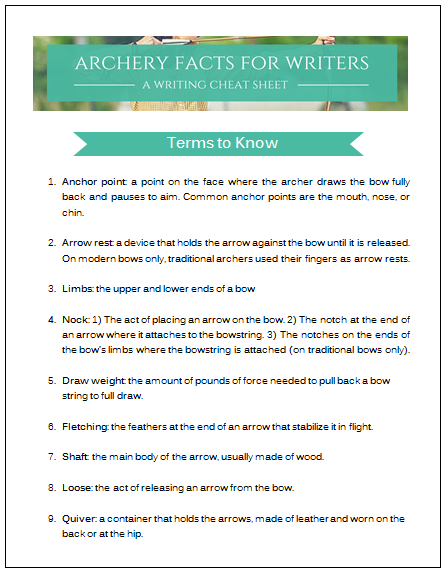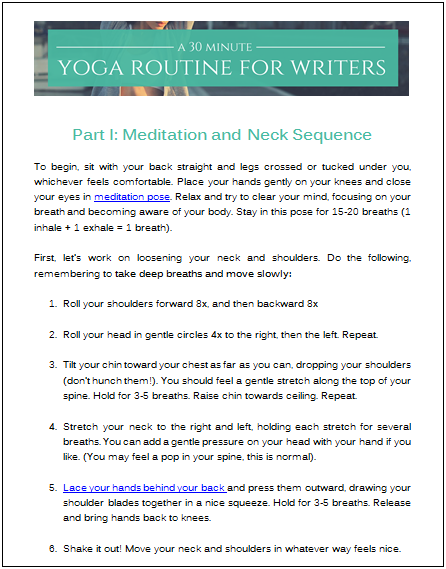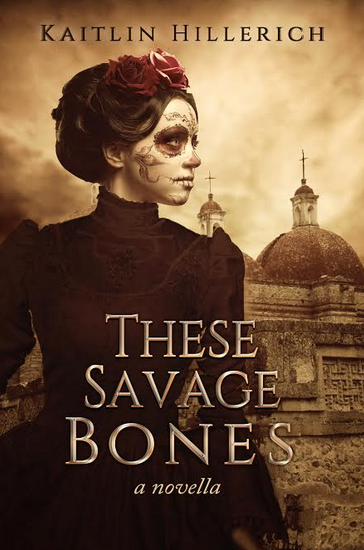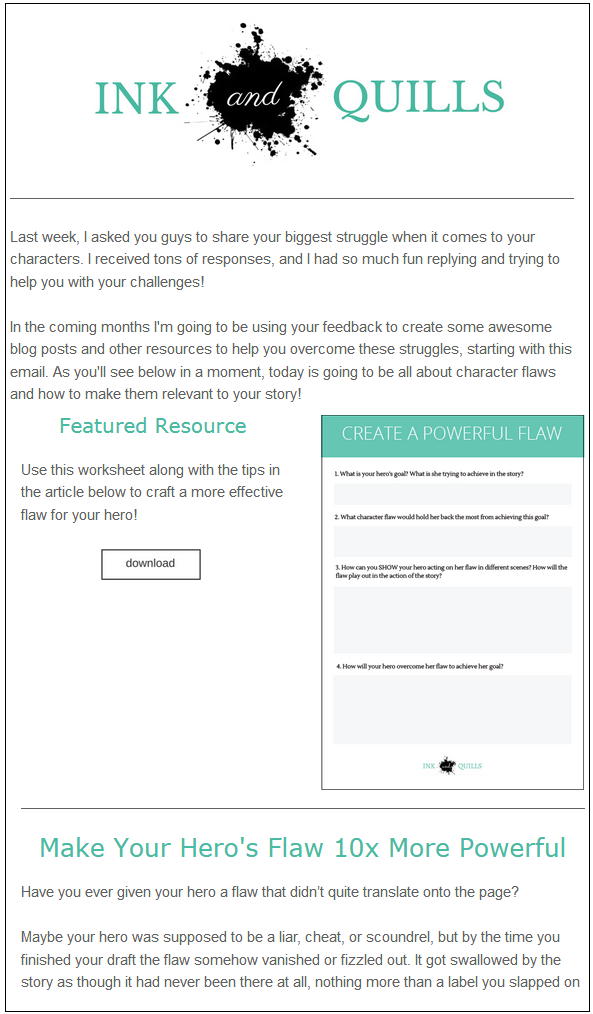I don’t think there’s any writer who doesn’t want to improve their craft. There’s always something new to learn, some area you can improve. But how can you strengthen your writing skills? Spoiler alert: it involves more than just writing and reading.
#1: Reading
Writers should read a little differently than the average person. When you read a book, pay attention to the inner-workings of the story. Have a questioning, analytical mind. How did the author pull off that twist? How did she plot out that mystery? What was it about that scene that made you cry? What techniques is she using to make this setting feel so real?
These things might be hard to pay attention to on the first read when you’re engrossed in the story, so you’ll probably need to read the book a second time to analyze it. And don’t hesitate to take notes!
#2: Practicing
The best way to learn something is by doing it yourself. When you set out to write a novel for the first time everything is new and unfamiliar to you. But the more you write, the more you learn. Things you struggled to remember start to become habit, and you’re able to move on to more advanced techniques.
It’s sort of like learning a martial art–you start out as white belt, but the more you practice the more skills you gain, the more moves you learn, and the closer you come to black belt status.
#3: Studying
It always baffles me how often writers skip over this one. Reading books on writing craft is just as important as reading fiction. Today more than ever there are countless resources out there to help you improve your writing–books, courses, and websites (like this one!). You would be crazy not to take advantage of them!
Seriously. Why would you waste time trying to figure all this stuff out on your own? These writers have spent years learning the craft and are offering you valuable information that’s essentially a shortcut to help you become a better writer faster and avoid their mistakes. Why wouldn’t you take advantage of that?! Yes, studying the craft takes time, effort, and maybe money if you’re purchasing books or courses, but your passion is well worth investing in.
And as a side note, you don’t need to study Creative Writing in college to be an author. Anyone can study the craft, and you don’t need to go to an expensive university to do so! For some suggestions of writing resources, you can check out my resources page.
#4: Dreaming
Writing is a creative art, and writers need to tend to their imaginations like one would nurture a garden. You need to allow yourself to dream, because this is usually where your ideas come from. Set aside a little time each day to let your thoughts wander. Engage in activities that fuel your imagination.
For me, this is usually reading, watching films, browsing Pinterest, and just having quiet time to think and ask “what if.” When you don’t allow your imagination to “play” you’ll find you become stifled, unhappy, and even depressed. Dreams are fuel for writers, and how we survive reality.
#5: Failing
As a writer, you’re not always going to get it right. You will have stories that won’t work, that will sit in your desk drawer forever and never see the light of day. And that’s okay. We learn more from our failures than we do from our success.
One of my favorite quotes is from Thomas Edison and says, “I didn’t fail. I just found 2,000 ways not to make a light bulb; I only needed to find one way to make it work.” To find out what works in a story, you’ll need to discover all the things that don’t work as well. Failures will make you a stronger writer.
#6: Experimenting
Test the boundaries. Do what you haven’t seen done before. Test yourself. Write what you’re afraid to write. It might work, it might not. You never know until you try. Don’t hesitate to try writing things you normally wouldn’t write–it will challenge you and cause you to grow as a writer.
For example, I hated poetry but had to write it for several college courses. As a result, I developed a better use of language, imagery, and rhythm. I also thought I could never write outside of the fantasy genre, but now I’m writing historical fiction and loving it. Is it harder for me than writing fantasy? Yes. But it’s opened up lots of new possibilities for stories.
Experiment with writing styles, genres, plots, characters, poetry, screen writing, play writing, journalism, writing sprints, NaNoWriMo. Try new things!
#7: Traveling
See as much of the world as you can. Traveling will help you grow as both a writer and a person. You will be exposed to new landscapes, ideas, and cultures. You will taste, smell, and hear things you never have before. You’ll develop a better understanding for people who are different from you, and learn that you’re really not that different after all. You may even be inspired to set your next story in a foreign land, or fill it with more diverse characters.
#8: Learning
Be curious and always be learning. Learn about other cultures, history, psychology, sociology. Learn about the things that interest you, whether it’s cooking, herbal remedies, Greek mythology, lock picking, wilderness survival, or how to write computer code. As an author, you will need to create a wide variety of characters, and all of them will come from different backgrounds with different interests. You never know when your knowledge might come in handy!
#9: Observing
Good writers are good observers. Pay attention to the world around you. What does the inside of a New York cab smell like? How does it feel when you kiss the one you love? What sounds fill a restaurant on a busy night? Collect and remember the details from your everyday life and weave them into your writing. The more you do this, the better you’ll develop this skill, and you’ll find that creating details for things you’ve never seen or experienced becomes easier.
#10: Living
One of the most important things to do as a writer is live. Go out and experience life. Don’t always be holed up in your house hiding behind a keyboard. You need to experience and see as much as you can so you can capture it in your writing.
What is it like to walk through a forest at night? Explore a cave? Leap from a cliff into a lake? Shoot a bow? Sail on the ocean? Fly in a plane? Go out and do it.
Understand the way the world works, its horrors and intricacies. Its shades of grey. The beauty and corruption of humanity.
Draw from your experiences when you write. Use your pain, embarrassment, anger, joy. What was it like when you kissed the one you loved? When they broke your heart? When you lost someone close to you? When you broke your arm? When you were betrayed by your friend? When you held your baby sibling for the first time?
To live is to experience what it is to be human. To write is to share and explore the human experience.
How do you try to become a stronger writer? Leave me a comment below!
















